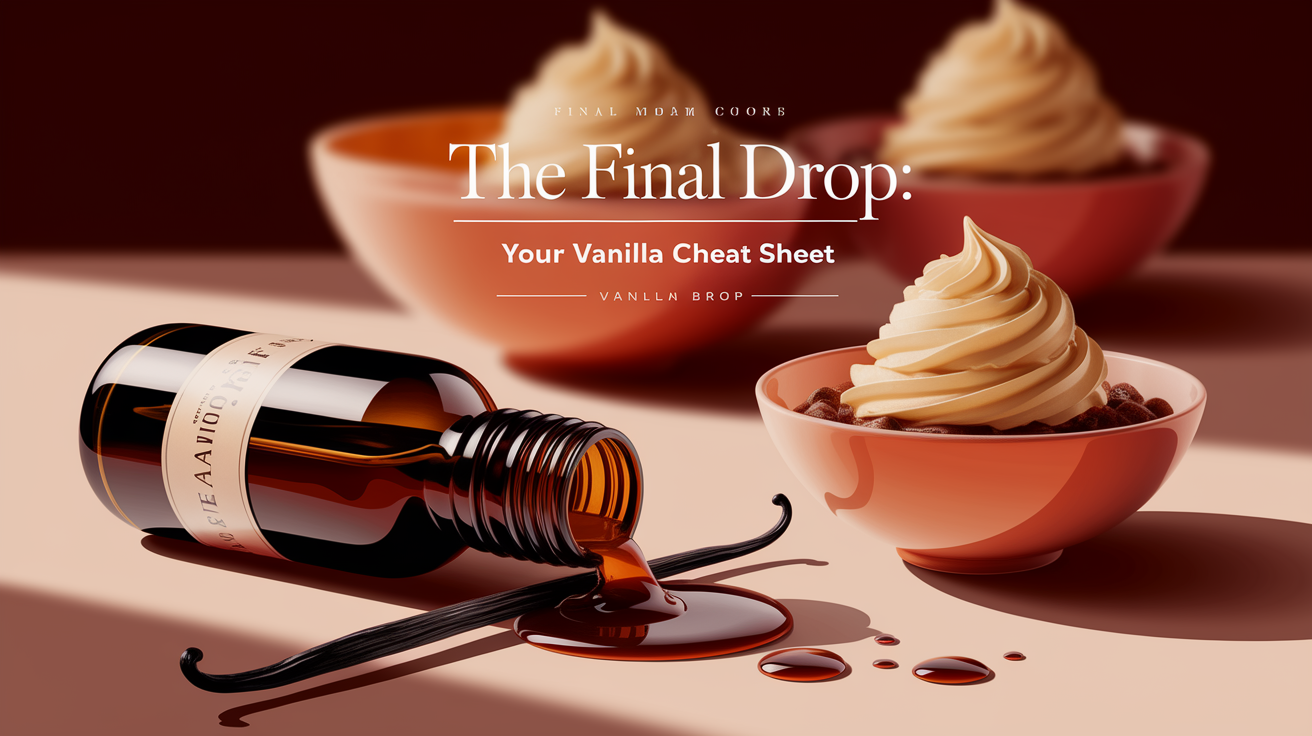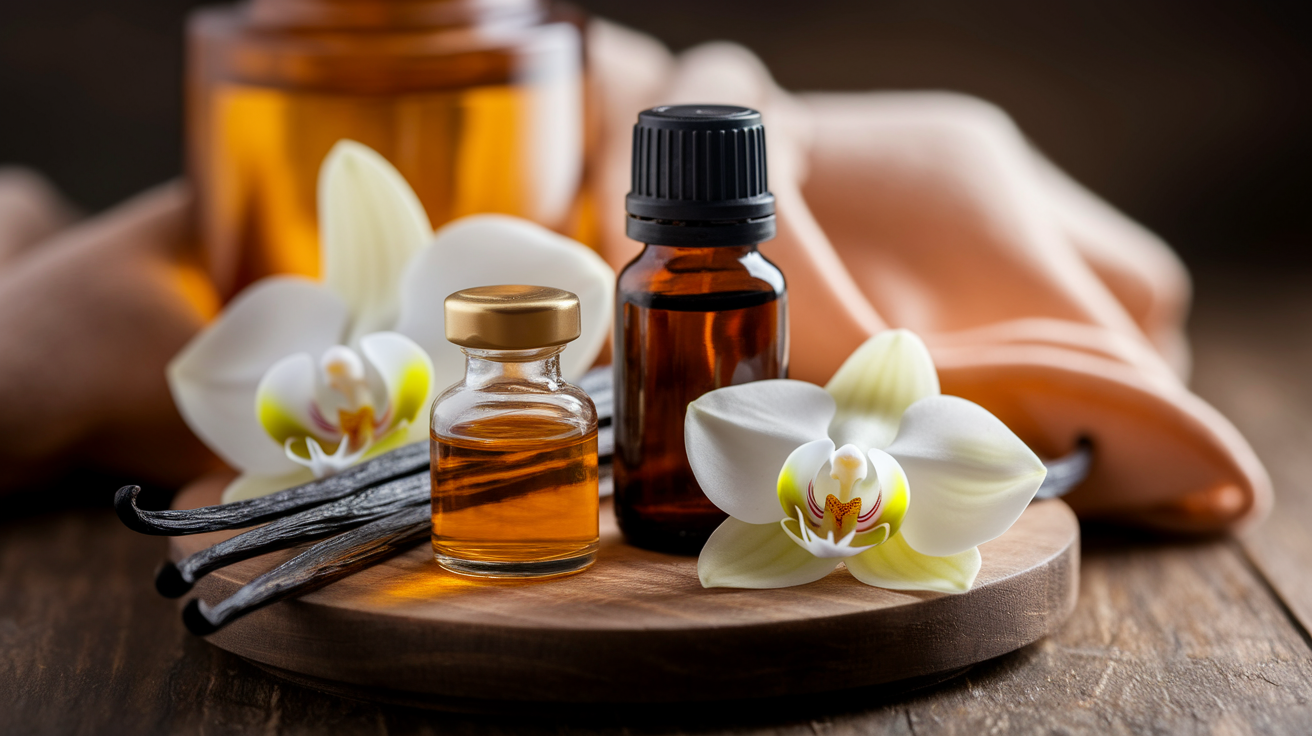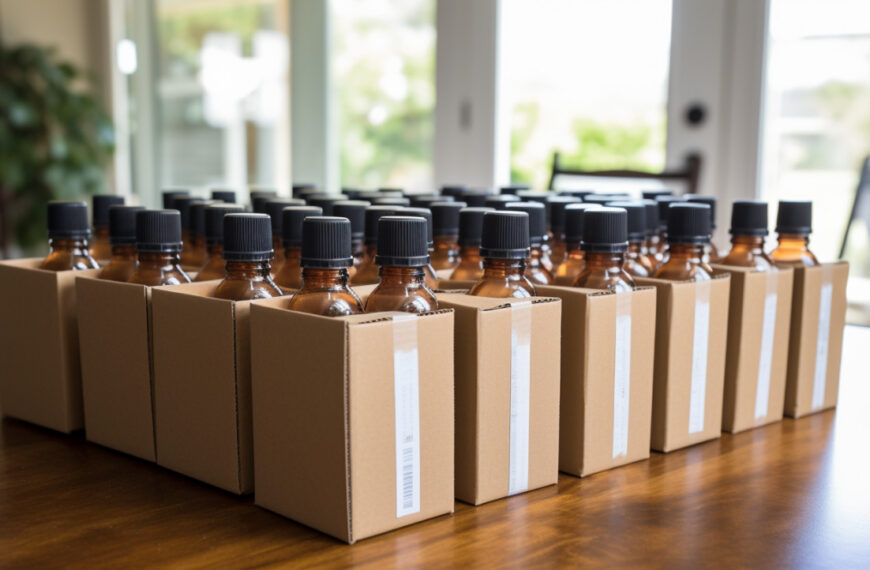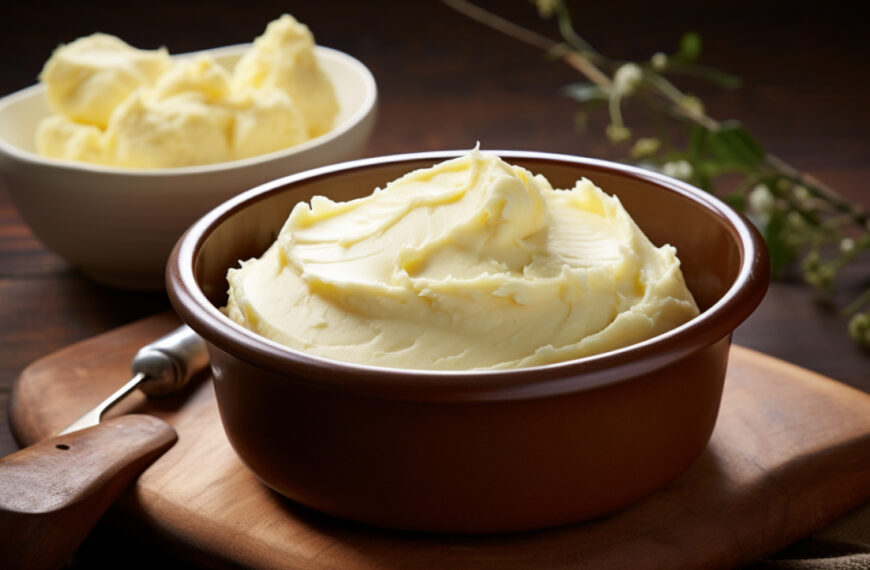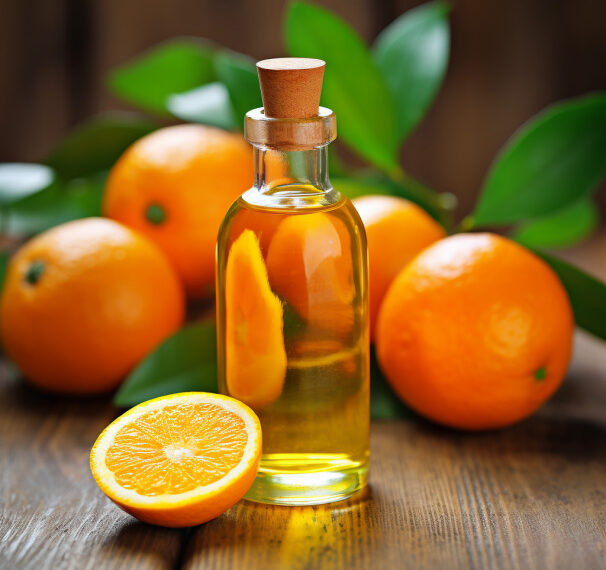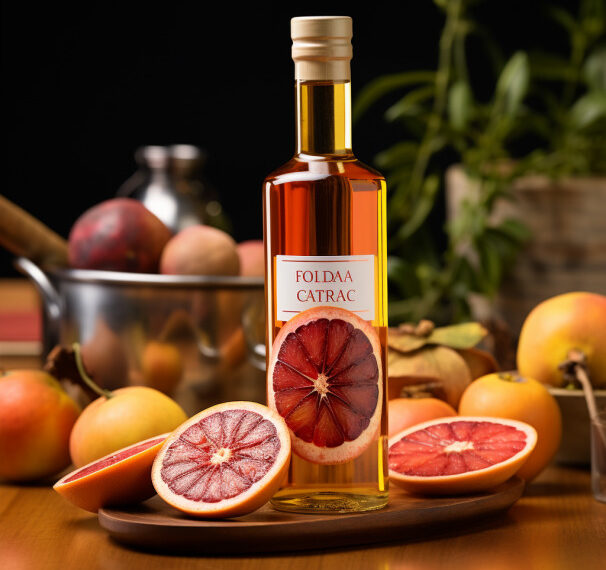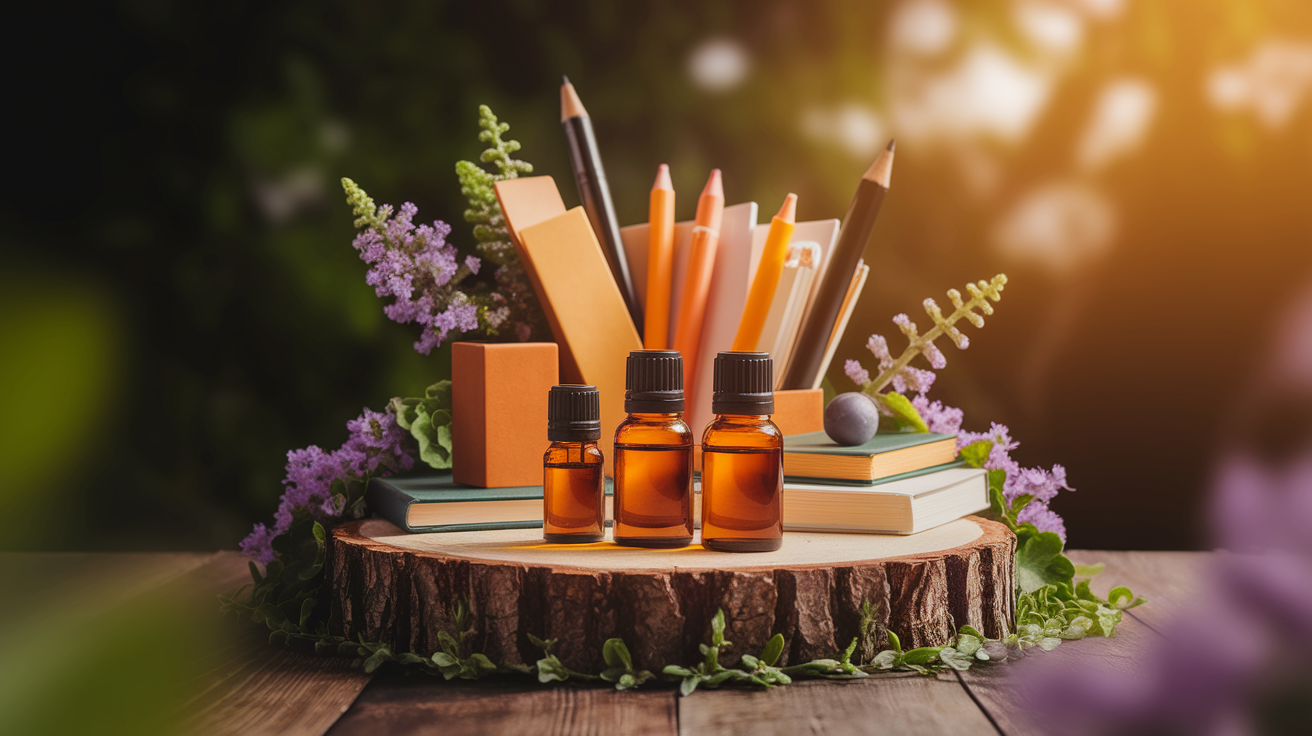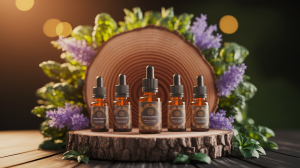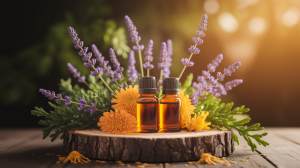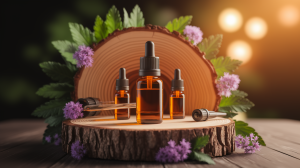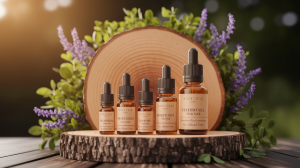A Flavor vs Fragrance Face-Off
Picture this: I’m in my kitchen, the air thick and warm from the oven, chocolate chip cookies on the rise, and that unmistakable sweetness of vanilla swirling around me. But here’s the twist—sometimes that luscious scent comes from vanilla extract, other times from a tiny bottle of vanilla essential oil. The difference in those bottles? Oh, it’s more than just a matter of label. One is a trusty kitchen staple for baking up joy; the other is a potent aromatic used more for skin, senses, and scents than for stirring into cake batter.
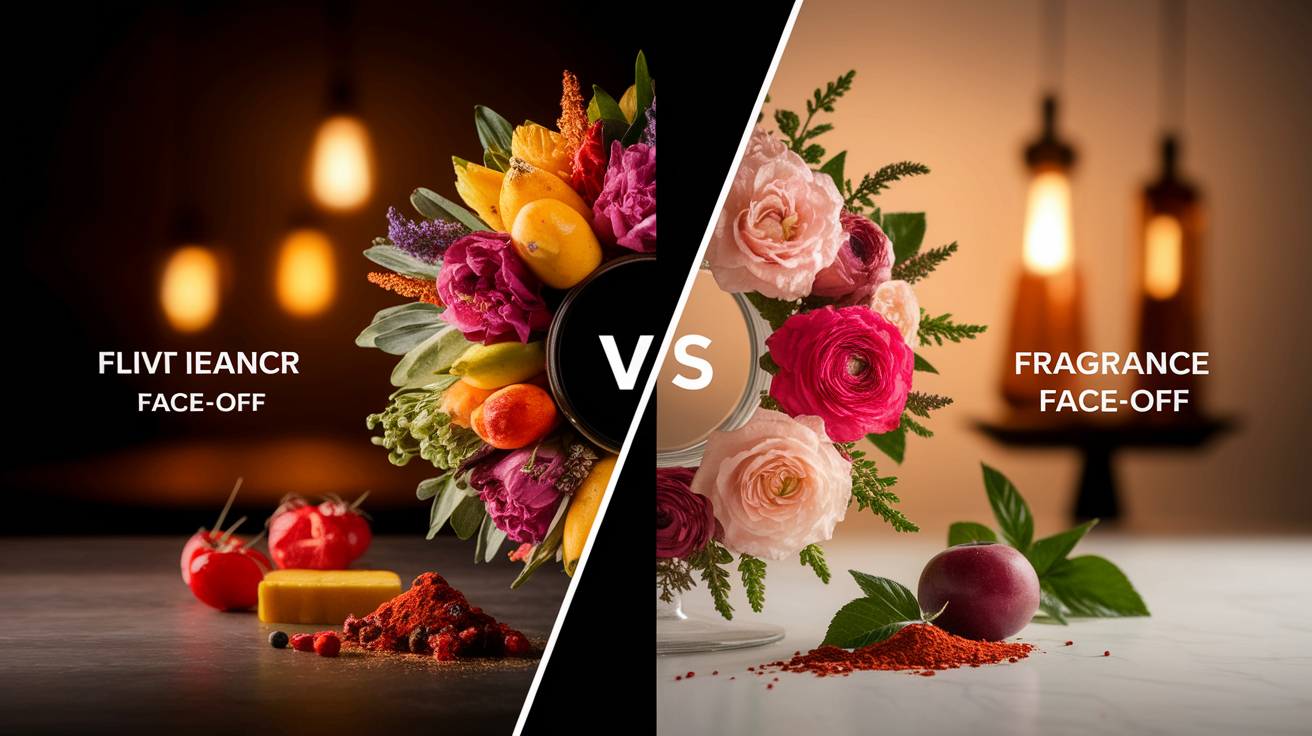
Where vanilla extract delivers warmth and depth straight into your taste buds, vanilla essential oil (more accurately, its concentrated cousins like vanilla absolute or CO2 extract) is all about an intense fragrance that clings and lingers. You wouldn’t drizzle your perfume into pancake batter, right? Well, the same idea applies here. The two may smell similar, but their strengths, purposes, and even how they’re made couldn’t be more different.
Demystifying Vanilla: Extract vs Essential Oil
Vanilla is born from the long, slender pods of the vanilla planifolia orchid, but how we get from bean to bottle takes wildly different paths. For pure vanilla extract, those fragrant pods are chopped, split, and soaked in ethyl alcohol and water—sometimes with a little glycerin or sugar—until the liquid captures their natural vanilla flavoring, rich with vanillin and dozens of other subtle compounds. The result is a flavorful, food-safe liquid regulated for culinary use.
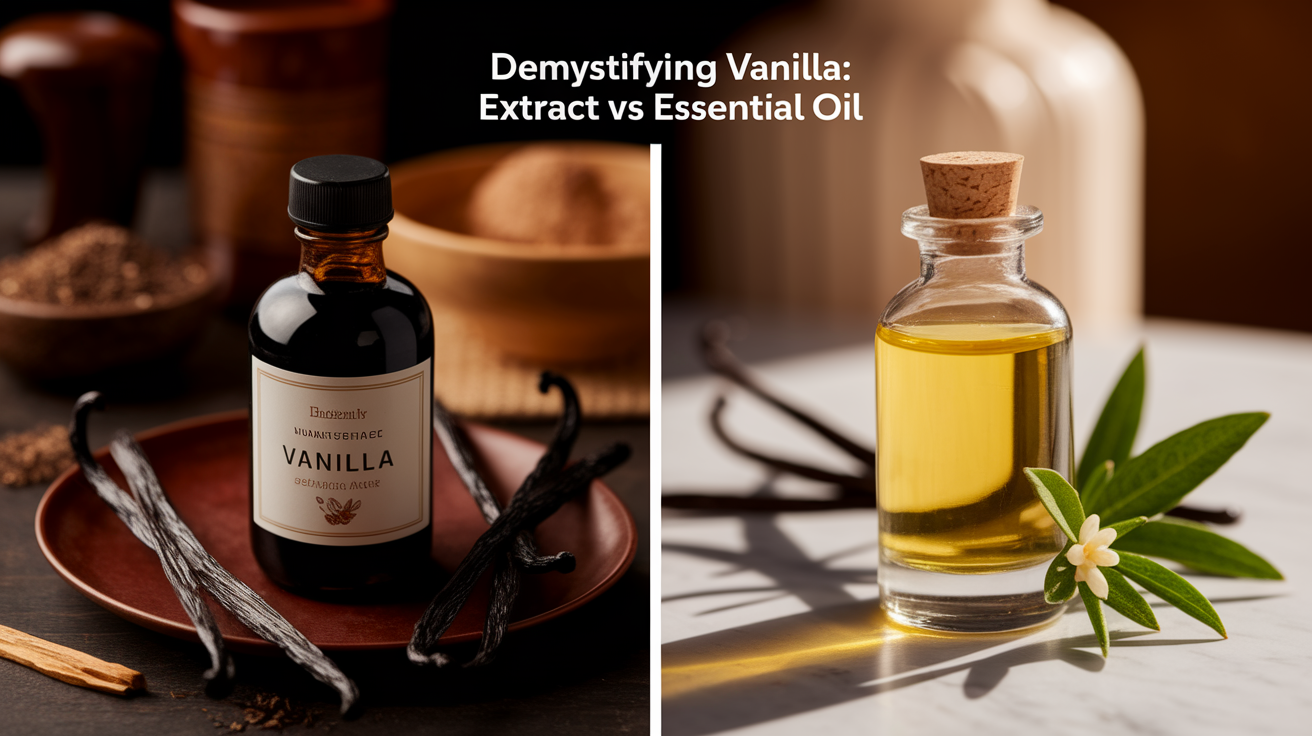
Now, vanilla essential oil? Here’s the kicker—it’s not a true “essential oil” at all in the traditional steam-distilled sense. Vanilla’s aroma compounds are too shy to leap out with steam, so instead producers use solvent extraction or CO2 extraction to coax the scent into a concentrated form called a vanilla absolute or CO2 extracted vanilla. This oil is alcohol-free, hyper-potent, and often expensive—more like a jewel kept for perfumery or aromatherapy than a pantry staple.
It’s worth remembering that vanilla essential oil in name can be misleading—often it’s a marketing shorthand for these other concentrated forms, and definitely not something you grab to make cupcakes.
Matching Vanilla to the Task: Uses Compared
Here’s where it gets fun (or frustrating, if you don’t choose wisely). Vanilla extract is a star in the kitchen—cookies, custards, coffee… it’s all meant to be eaten. But slip that into your bath soap recipe? Disaster. The alcohol can mess with your formulation, and the scent fades faster than a summer ice cream cone in the sun.
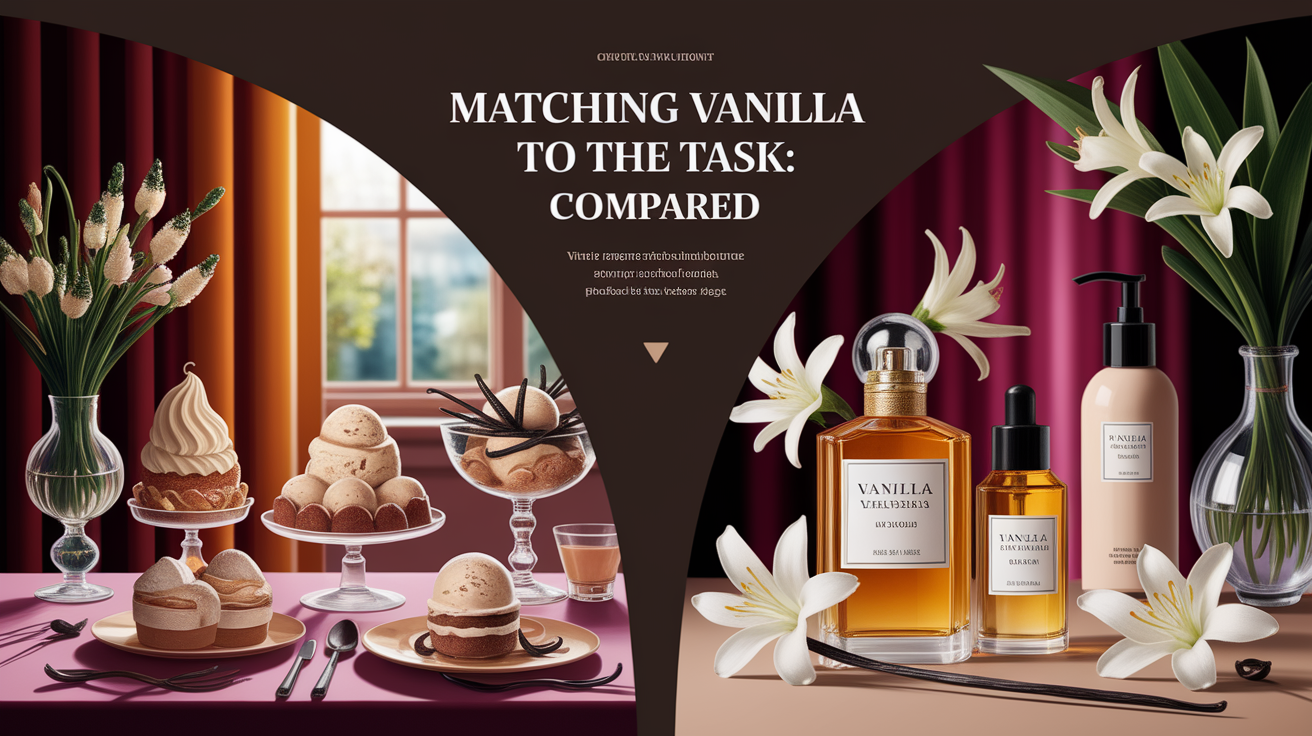
Vanilla essential oils and absolutes, on the other hand, stay out of the mixing bowl. They’re perfect for cosmetic-making, perfumes, or even a touch of aromatherapy to conjure a cozy, comforting vibe. I’ve watched a single drop of CO2 extracted vanilla turn a bland lotion into a decadent treat for the senses. But for food? No. The potency, the oil content, and safety factors (not all are food-grade) mean they don’t swap straight in for extract.
- Vanilla extract: Cooking, baking, beverages.
- Vanilla essential oil/absolute: Perfumery, aromatherapy, luxury skin products (with dilution).
Swap Smart: Substitution Guidelines
Here’s the burning question—can you substitute vanilla extract for essential oil? In short, for baking: extract is king. If you run out and only have imitation vanilla, you can often swap 1:1 without much trouble in recipes. But trading in vanilla essential oil for extract? That’s a culinary gamble. The oil’s strength and solubility make it unsuitable for most recipes, not to mention the safety concerns if it’s not food-grade.
In the other direction, using vanilla extract in a diffuser or as a perfume oil won’t work—the alcohol base just won’t blend well, and the scent won’t last. In topical or aromatherapy use, essential oil forms are diluted in carrier oils, never applied neat and never replaced with alcohol-based extracts.
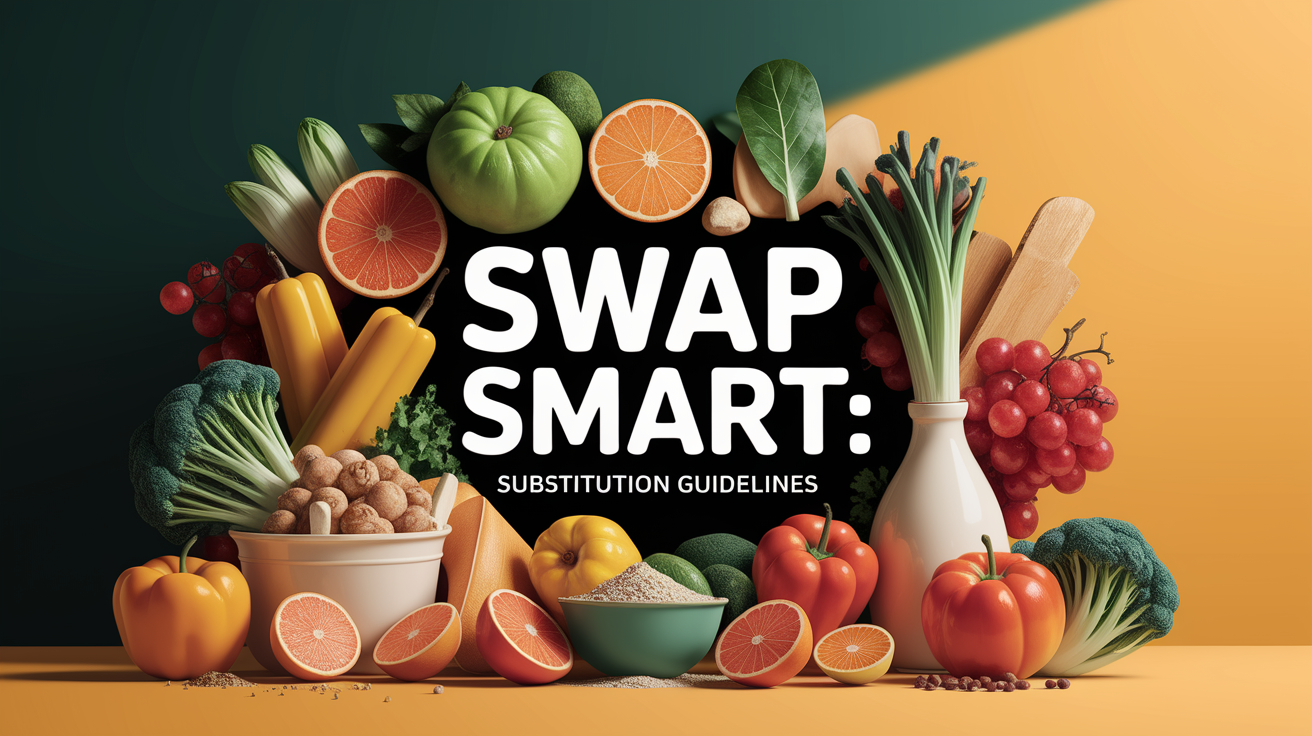
The golden rules are simple:
- For food: Stick with food-grade vanilla extract (pure or imitation).
- For scent: Use vanilla essential oil, absolute, or CO2 extract properly diluted.
- Never swap directly without checking the form, grade, and intended purpose.
When in doubt? Follow trusted recipe guidelines—vanilla can be fussy about context.
The Final Drop: Your Vanilla Cheat Sheet
- Extraction method: Extract uses alcohol; essential oil forms use solvent or CO2 extraction.
- Main use: Extract for flavor, oil for fragrance.
- Substitution: Only like-for-like—no skipping between the kitchen and the diffuser.
- Forms to know: Pure vanilla extract, imitation vanilla, vanilla absolute, vanilla oleoresin, CO2 extracted vanilla.
Both vanilla extract and vanilla essential oil (and its concentrated cousins) are treasures—they just shine in very different stages. Know their strengths, and you’ll never have to suffer a cookie that tastes like perfume, or a lotion that smells like cake batter that’s been left out too long.
